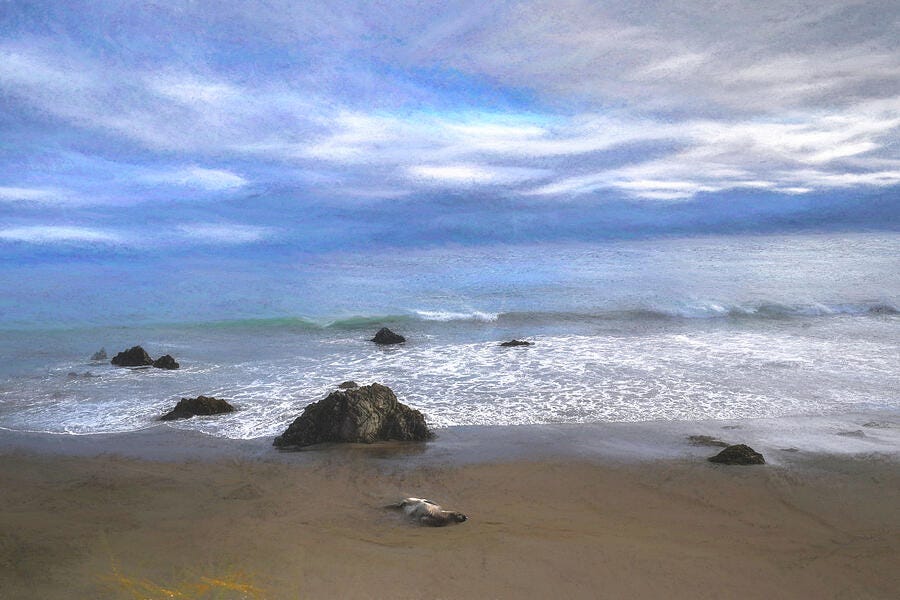Signed Originals Unsigned Open Edition Prints
Kodi and I took a short hike this week to the old lime kiln on the side of Black Mountain in Pike, New Hampshire. Now, if you haven’t heard of Pike, don’t be surprised. It’s actually a township within the town of Haverhill in the Upper Valley of New Hampshire. In the days when I was a State Senator, Pike was among the 32 towns in District 2 . . . I loved the folks from Pike. Alice and I always looked forward to events there. They were the very definition of community. In the summer, they seemed to go out of their way to make community events happen, including a semi-serious game of coed softball.
To top it off, Alice and I knew where the best, most private spots were for skinny dipping in the pure waters of the area and taking a nap with two-year-old Zach.
The visit to Pike reminded me of a fun story from those days, but let’s get to the point of this piece before I tell the story.
During the hike to the Lime Kiln I noticed some very healthy patches of a plant that has always - like the people of Pike - had a special place in my heart.
Among the most interesting and commonly seen plants in the spring and early days of summer, especially before the plethora of later plants begin to obscure their presence, is what is commonly called Horsetail (Genus: Equisetum).
It looks exactly as its descriptive common name suggests. Nowadays, mostly only a native boy and environmental geek like me finds joy in its sighting. That’s because, other than as an ornamental adornment to a kick-ass bouquet, its most useful purposes have now been replaced by modern-day products like scouring pads and sandpaper, and concoctions like aspirin and cough syrup. Not so for my ancestors - of both Native American and colonial origins.
Your great-grandparents and their own great-grands probably referred to this plant as “Scouring Rush” because it was used by Native Americans and early colonials as a scouring - and sanding - tool before the days of Brillo, sandpaper, and other commercial products. Back in my mountain guide days, I encouraged folks to use the silica rich plant to clean their cookware after a meal. It provided an effective and environmentally safe means of cleaning up.
It is such a prolific plant that many folks find it poking up in their flower or vegetable gardens and determine to remove the invaders. But to the aesthetic, it offers an interesting offset to the colors of flowers, leaves, and stems. So, let me offer a plea to appreciate the beauty and contrast of horsetail in your garden or your bouquets.
Equisetum is considered to be a "living fossil". Meaning that the plant has been around for over 100 million years, as documented in the fossil record. It seems to have arisen in the late Jurassic and ultimately dominated the understorey of late Paleozoic forests with everything from plants that resemble those of today's forests to 100-foot “Plant-trees”.
There is no universal Native American word for the horsetail plant, of course, because Native American languages are diverse and there are more than 500 nations across North America. Each with its own name for the plant, based on their specific language and local knowledge.
In the Northwest, where varieties of horsetail are more numerous, and some are large enough to provide a side dish for a meal - without “eating” up an entire day in the preparation - the young shoots still are eaten. I find the flavor rather bland myself, but others may have more refined palates.
Here in the northeast - the Abenaki or more broadly the Wabanaki - The People of the Dawnland - inhabited (and still inhabit) the regions we have come to know as Maine, New Hampshire and southern parts of the Province of Quebec. Here the number of subspecies are more limited, for whatever reasons - an ethnobotanist would be able to provide you with chapter and verse on the whys and wherefores but the natural result is that the uses of the plant are reflective of the relationship that the human community has with it in tandem with our needs.
In Abenaki mythology, the highest deity is Gici Niwaskw, also known by the titles Tabaldak and Niwaskowôgan, which translate generally to “Great Spirit”. In most Native American traditions, there is no gender attributed to whatever higher power exists, where Christianity and other Abrahamic religions (Christian, Jewish and Muslim) presume “God” to be male. The Cheyenne and the Lakota refer to Maheo and Wakan Tanka respectively, roughly translated to “the great mystery”, again without reference to gender.
Just as the Christians, Jews and Muslims have built their myths - and they are myths - around their respective cultural traditions, every Native American nation has an origin story built around their own cultural traditions.
According to the creation myth of the Abenaki, there existed no sound or color before Niwaskowôgan desired it and began the process of creating the world. To do so (s)he called forth a giant turtle, called Tolba, from the primordial waters, crafting the land on top of Tolba’s shell and the clouds above that. After this creation the Great Spirit fell asleep and began to dream of every creature and plant to ever exist, waking to discover that the dreams had become reality as Niwaskowôgan had slept. Thus the newly created world was populated by living things. As skeptical as I am about any religion, I love the myth of my Native ancestors because it makes us one with the universe.
Whether you subscribe to the evolutionary scientific record of Darwin or the creation story of one or another religious faith, or some mix of myth, science and faith, the existance of Horsetail is fact. Embrace the fact.
Put your hands on a horsetail. Add it to your floral bouquet. Celebrate the way it waves in the breeze
Like the town of Pike, where community matters. Let the community of earth gather us together and spread joy and faith in equal measures as we seek to build common ground. . . and speaking of building common ground:
I’ll never forget during a softball game, Alice got a hit and found herself on first base. The woman playing first asked her if I was a good dad. Alice jokingly told her that my finest quality was that I would get up in the middle of the night to change a dirty diaper. The first baseman looked at her incredulously and said, “I’ll never understand why my husband can gut and dress out a deer without blinking, but runs away as fast as he can from a dirty diaper!”
Links & Notes
Genuus Equistum Wikipedia
How to eat a horsetail (mostly applicable to “Giant Horsetail” in Northwest.) https://arcadianabe.blogspot.com/2015/03/how-to-eat-horsetail.html
Your purchases of images from the gallery benefit both the Chronicles and the Podcasts and make it possible to produce them without advertisements.
No room for a new piece of art? All these images are available as cards, mugs, puzzles, shower curtains, phone cases, clothing, totes, and more. Click here for merch.
Peering into the Barn
The Winter Warrior
Chillin’ at Seal Beach
Fighting Elephant Seals at Seal Beach, San Simeon, California
Dancing for the Future
Unsigned affordable Open Edition Prints
Lightplay on Fiddleheads
Best Friends Dreams











